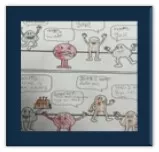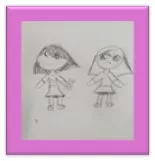Emotion Recognition, Emotion Regulation and Sympathy Skills in Peel Region Schools

This spring, I developed a knowledge translation product based on research conducted by members of the CCDMP. I wanted to utilize empirical research examining children’s emotion recognition, regulation, and sympathy skills and translate it into a usable form for educators to implement in their curriculum.
I developed a facilitation guide for teachers to use in the classroom to improve their students' understanding and management of their emotions. I also tested the effectiveness of this facilitation guide at an elementary school in the Peel Region which allowed me to include in-depth facilitator notes within the guide.
The facilitation guide is comprised of 4 activities intended to be spread over three weeks. Each activity was designed to allow for simple usability and reproducibility, specificity to classroom age groups (kindergarten, grade 1, and grade 2), cost-effectiveness, encouragement for frequency of use, and creative expression for children to have increased vulnerability and openness to their thoughts and feelings. These values and connections to the Ontario curriculum were ensured by a focus group I hosted with two sixth-grade teachers and the teacher of the first and second-grade classrooms I visited.
Below are pictures of students’ work from the activities I facilitated in person which display their thoughts and reflections while completing the tasks.






Read More https://discoverpsych.utm.utoronto.ca/isabella-article/


